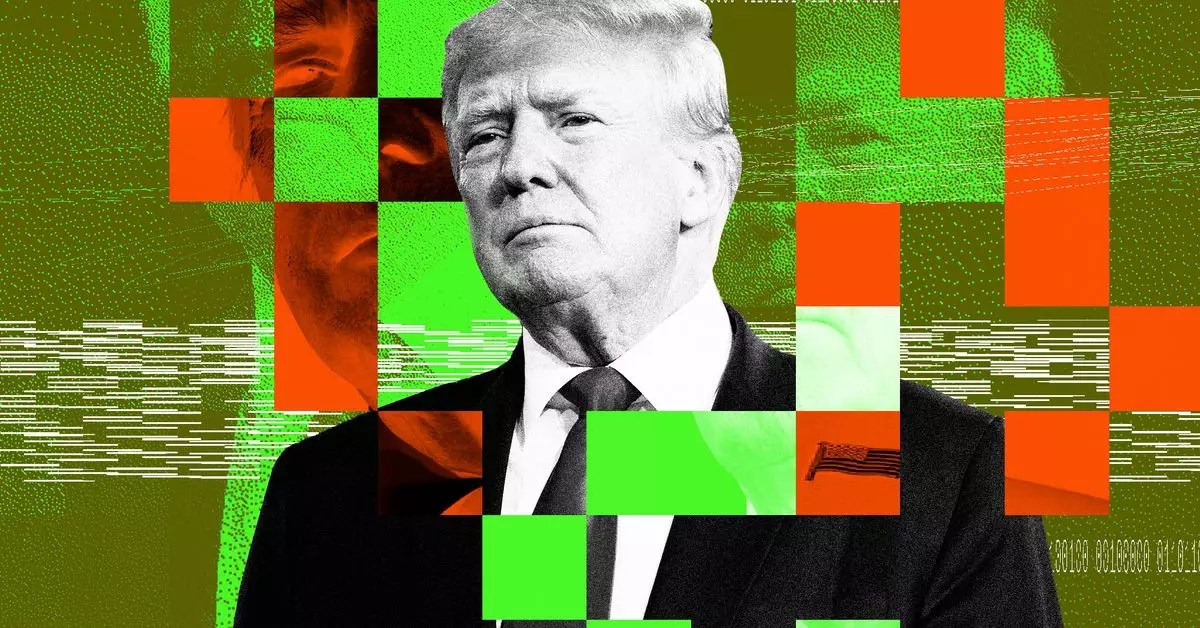In an era where digital currencies are gaining traction, the recent emergence of World Liberty Financial is framed as a harbinger of change, offering a purportedly groundbreaking solution to the American public’s financial woes. Spearheaded by notable figures like former President Donald Trump and his sons, the platform promises to liberate everyday citizens from the clutches of traditional banking institutions and financial elites. The allure is clear: the cryptocurrency landscape is often depicted as a transformative avenue for the unbanked and marginalized communities. However, a critical examination reveals a convoluted narrative shrouded in ambiguity and unmet expectations.
Trump’s assertions of World Liberty Financial’s potential, shared via platforms like Truth Social, suggest a vision where cryptocurrency stands as an empowering force, automatically enhancing accessibility to those excluded from conventional financial systems. Nonetheless, the lack of transparent information raises pressing questions. What mechanisms will World Liberty Financial employ to ensure that it genuinely caters to the unbanked? What specific services are being offered, and how will they translate into tangible benefits for Americans in need? These are inquiries that remain frustratingly unanswered.
As the dust settles from World Liberty Financial’s announcement, the focus has shifted to its current operational status—the company is inviting sign-ups. However, rather conspicuously, the welcome mat is only extended to accredited investors in the U.S. and individuals outside the United States. The implications of this restriction are significant. By confining its access to a relatively affluent demographic—individuals with substantial net worths, often defined by the U.S. Securities and Exchange Commission (SEC)—World Liberty Financial appears to diverge from its own proclaimed mission of financial inclusion.
The Know Your Customer (KYC) process, while critical for compliance and risk management, paradoxically undermines the platform’s professed goal of fostering inclusivity. According to guidelines, a potential accredited investor must possess a considerable net worth and meet specific income thresholds. While a projection of 24 million American households qualifies under these criteria, nearly 20 percent of U.S. households still find themselves outside this exclusive circle. Thus, World Liberty Financial’s access becomes a hollow promise, falling short of aiding those who require support the most.
What remains perplexing is the sheer lack of clarity surrounding the core functionalities of World Liberty Financial. Its stated ambition to promote “mass adoption of stable coins and decentralized finance” contrasts sharply with the absence of explicit details on how this will be executed. Statements made during the launch event raised further confusion, with adviser Corey Caplan stating that WLFI governance tokens would play a pivotal role in the platform’s operations. Yet, when pressed for concrete details regarding how these tokens would facilitate governance or finance, the conversation diverted into defensive jabs at “fake news media” rather than outlining a coherent business strategy.
Moreover, the whitepaper partiality reported by CoinDesk indicated a significant portion of WLFI tokens would be held by founders and associates. When mixed signals about the distribution strategy emerged—claiming a shift from 70 percent to 63 percent availability for public sales—one cannot help but feel that transparency is not an operational priority. For a project heralded as revolutionary, the surrounding atmosphere of uncertainty is glaring.
World Liberty Financial’s launch is reminiscent of a tantalizing promise hanging in the balance, surrounded by an aura of unfulfilled potential. While the allure of cryptocurrency as an agent for financial empowerment is enticing, the approach adopted by its proponents raises alarm bells regarding inclusivity and transparency. As it stands, the company’s intentions—shrouded in vagueness and padded with lofty rhetoric—suggest a need for critical examination and scrutiny.
The unfolding story of World Liberty Financial stands as a cautionary tale about the dangers of rhetoric over reality in the cryptocurrency space. If the goal is truly to aid unbanked and underserved communities, clearer strategies and more inclusive practices are imperative. Moving forward, it is essential for the creators of such platforms to engage in a genuine dialogue about their objectives and methods, ultimately laying the groundwork for accountability that can earn the trust of a skeptical public.


Leave a Reply